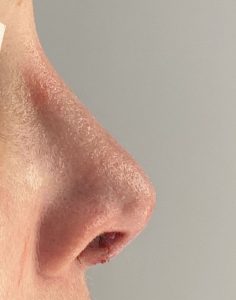Rhinoplasty surgery has tremendous capabilities of changing the shape of the nose. In doing so there are many tried and true techniques of how to do it successfully as well as how to maintain the result long term. Despite the many techniques available to change the structural framework of the nose, there are no established methods as how to specifically ‘regender’ the nose shape. There are known nasal shape differences between men and women and this guides how to make female and male noses more proportionate for their gender. But to take a genetic male nose and change it to a nose shape that clearly passes as female is more of an art form than standard rhinoplasty technique.
Feminizing a nose from that of a male’s is almost exclusively a reduction type rhinoplasty. The structural framework of the nose must be reduced from the height of the bridge/dorsum, the width of the nasal bones to the projection and rotation of the nasal tip. While cartilage must be removed for some of these changes, altering the shape of some of these cartilages rather than radical reduction of them and even adding cartilage to support the reduction must be done for a successful result.


Feminizing the genetic male nose by rhinoplasty surgery is about reduction but with support. The central reduced septum is the key where serves as a graft source but also controls dorsal line reduction as well as tip projection and rotation. While the caudal septum needs to be reduced a columellar strut placed in front of it between the medial footplates of the lower alar cartilages is essential to support the tip reshaping than needs to be done .
Dr. Barry Eppley
World-Renowned Plastic Surgeon



